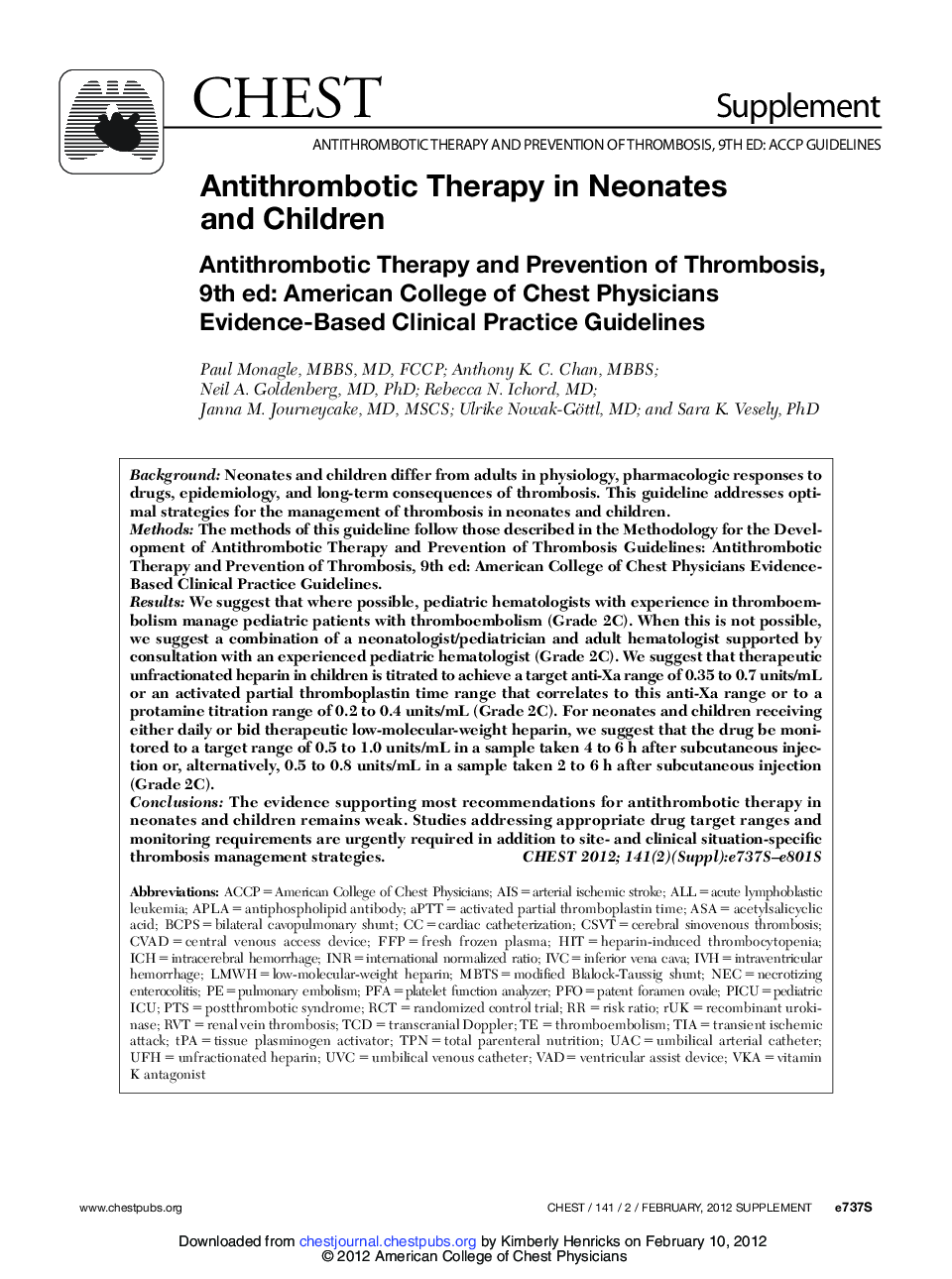| کد مقاله | کد نشریه | سال انتشار | مقاله انگلیسی | نسخه تمام متن |
|---|---|---|---|---|
| 2901320 | 1173349 | 2012 | 65 صفحه PDF | دانلود رایگان |

BackgroundNeonates and children differ from adults in physiology, pharmacologic responses to drugs, epidemiology, and long-term consequences of thrombosis. This guideline addresses optimal strategies for the management of thrombosis in neonates and children.MethodsThe methods of this guideline follow those described in the Methodology for the Development of Antithrombotic Therapy and Prevention of Thrombosis Guidelines: Antithrombotic Therapy and Prevention of Thrombosis, 9th ed: American College of Chest Physicians Evidence-Based Clinical Practice Guidelines.ResultsWe suggest that where possible, pediatric hematologists with experience in thromboembolism manage pediatric patients with thromboembolism (Grade 2C). When this is not possible, we suggest a combination of a neonatologist/pediatrician and adult hematologist supported by consultation with an experienced pediatric hematologist (Grade 2C). We suggest that therapeutic unfractionated heparin in children is titrated to achieve a target anti-Xa range of 0.35 to 0.7 units/mL or an activated partial thromboplastin time range that correlates to this anti-Xa range or to a protamine titration range of 0.2 to 0.4 units/mL (Grade 2C). For neonates and children receiving either daily or bid therapeutic low-molecular-weight heparin, we suggest that the drug be monitored to a target range of 0.5 to 1.0 units/mL in a sample taken 4 to 6 h after subcutaneous injection or, alternatively, 0.5 to 0.8 units/mL in a sample taken 2 to 6 h after subcutaneous injection (Grade 2C).ConclusionsThe evidence supporting most recommendations for antithrombotic therapy in neonates and children remains weak. Studies addressing appropriate drug target ranges and monitoring requirements are urgently required in addition to site- and clinical situation-specific thrombosis management strategies.
Journal: Chest - Volume 141, Issue 2, Supplement, February 2012, Pages e737S–e801S